Introduction
In the real estate and property management world, a picture may be worth a thousand words, but an interactive map is worth a thousand data points. Whether you’re a homebuyer comparing neighborhoods, a property manager tracking maintenance zones, or a developer analyzing market trends, mapping features transform raw address lists into intuitive visual stories. From simple pins to sophisticated heat maps and 3D extrusions, the right combination of tools helps users spot patterns, evaluate opportunities, and make data‑driven decisions. In this post, we’ll dive into the essential mapping features for visualizing property locations, explain when and why to use each, and offer practical tips for implementing them using popular mapping libraries.

1. Marker and Pin Visualizations
1.1 Simple Markers
Markers, or “pins,” are the foundation of any property map. Each marker represents a single property’s latitude and longitude.
- Use Case: Display all available listings in a city.
- Implementation (Leaflet): javascriptCopyEdit
L.marker([40.7128, -74.0060]).addTo(map) .bindPopup('123 Main St, New York, NY');
1.2 Custom Icons
Custom icons convey additional information at a glance—residential vs. commercial, price tiers, or availability status.
- Example: Blue pins for rentals, green for sales, red for pending.
- Tip: Keep icon size under 40×40px to prevent clutter and ensure quick loading.
2. Marker Clustering
When hundreds of properties occupy a small area, individual markers overlap and hinder exploration. Clustering groups nearby pins into a single symbol with a count.
- Benefit: Improves performance and declutters the map at low zoom levels.
- Dynamic Behavior: Clusters “explode” into individual markers as you zoom in.
javascriptCopyEdit// Using Leaflet.markercluster
var markers = L.markerClusterGroup();
properties.forEach(prop => {
markers.addLayer(L.marker([prop.lat, prop.lng]));
});
map.addLayer(markers);
3. Heat Maps
A heat map uses color gradients to show concentration or density—ideal for spotting market hot spots or underserved areas.
- Color Scale: Blue (low density) → Red (high density).
- Configuration: Adjust radius and blur to fine‑tune appearance.
javascriptCopyEdit// Heatmap.js example
var heat = h337.create({ container: document.querySelector('#map') });
heat.setData({ max: 50, data: propertyPoints });
4. Choropleth and Thematic Layers
Choropleth maps shade geographic areas—ZIP codes, neighborhoods, school districts—based on aggregated metrics like average price or days on market.
- Use Case: Compare average home values across districts.
- Data Preparation: Precompute metrics for each region and serve as GeoJSON properties.
javascriptCopyEditL.geoJson(neighborhoodsGeoJSON, {
style: feature => ({
fillColor: getColor(feature.properties.avgPrice),
fillOpacity: 0.7,
weight: 1
})
}).addTo(map);
5. Polygons and Boundaries
Drawing polygons to outline parcels, subdivisions, or zoning areas adds context beyond point data.
- Interactive Tooltips: Show parcel owner or zoning designation on hover.
- Editing Interfaces: Allow users to draw or modify boundaries directly in the map UI.
6. Pop‑ups and Info Windows
Clicking a marker or polygon opens an info window displaying property details: photos, price, size, and links to full listings.
- Rich Content: Embed image carousels, contact buttons, and mortgage calculators.
- Performance Tip: Load detailed content lazily—fetch media only when the pop‑up opens.
7. Filterable and Dynamic Layers
Layer controls let users toggle categories—show only rentals, new developments, or properties under $500K.
- Real‑Time Filtering: Use UI sliders or checkboxes bound to JavaScript functions that show/hide markers.
- Example: javascriptCopyEdit
document.getElementById('priceSlider').oninput = val => { markers.clearLayers(); properties.filter(p => p.price <= val).forEach(p => { markers.addLayer(L.marker([p.lat, p.lng])); }); };
8. Geocoding and Reverse Geocoding
- Geocoding: Convert user‑entered addresses into map coordinates.
- Reverse Geocoding: Let users click the map to retrieve the nearest address or parcel ID.
javascriptCopyEdit// Mapbox Geocoding
map.on('click', e => {
geocoder.reverseGeocode({ query: [e.lngLat.lng, e.lngLat.lat] })
.send()
.then(res => console.log(res.body.features[0].place_name));
});
9. Street View and 360° Imagery
Integrate street‑level panoramas (Google Street View or custom 360° photos) so users can virtually “walk” property exteriors.
- UI Toggle: Switch between map and street view on the same canvas.
- Use Case: Evaluate curb appeal without an in‑person visit.

10. 3D Buildings and Terrain
For urban planning or high‑rise developments, 3D extrusions of building footprints and terrain elevation models add depth.
- Tools: Mapbox GL JS supports building extrusion based on height attributes.
- Benefit: Visualize skyline impact and shadow studies.
11. Isochrone and Drive‑Time Polygons
Isochrones (areas reachable within X minutes of travel) help users understand commute times or delivery zones.
- Example: Show a 15‑minute drive‑time polygon around a property.
- Data Sources: APIs like Mapbox Isochrone or OpenRouteService.
12. Time‑Slider Animations
Animate property transactions or price changes over time with a time slider, revealing market dynamics:
- Monthly Sales: Display sold listings month by month to show seasonality.
- Price Trends: Color markers by price tier and watch clusters shift over years.
13. Integration and Performance Considerations
- Vector Tiles vs. GeoJSON: Use vector tiles for large datasets to improve performance.
- Clustering Strategy: Balance cluster size with user interactivity—small clusters for dense urban areas, larger for rural.
- Lazy Loading: Load only visible data based on current map bounds.
- Caching: Implement client and server caching for repeated queries (e.g., tile caching, memoized geocoding).

14. Choosing the Right Mapping Library
| Library | Highlights | Best For |
|---|---|---|
| Leaflet.js | Lightweight, plugin‑rich | Quick prototyping, moderate datasets |
| Mapbox GL JS | High‑performance vector rendering, 3D extrusions | Large datasets, advanced styling |
| Google Maps | Street View, rich POI data | Global coverage, familiarity |
| Esri ArcGIS JS | Enterprise GIS features, advanced analysis | Government, utilities, environmental use |
Conclusion
Implementing the right mix of mapping features—markers, clustering, heat maps, thematic layers, polygons, and beyond—turns static property data into powerful visual narratives. By choosing the appropriate tools and optimizing performance, you can create intuitive, interactive maps that help users explore, analyze, and act on location‑based insights. Whether you’re launching a real estate marketplace, managing field service territories, or planning urban developments, a well‑designed map is your gateway to smarter decision‑making.


